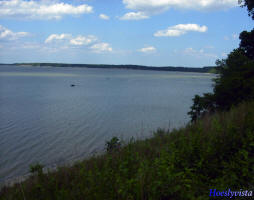 Improved waste recycling will benefit environment and boost European industry
Improved waste recycling will benefit environment and boost European industry
Waste from electrical and electronic equipment is one of the fastest growing waste streams in the European Union (EU). The increasing prevalence of affordable electronics means landfill sites are filling up with the consequent waste from sources such as light bulbs, spent batteries, printed circuit boards, liquid crystal displays and cathode ray tubes. The quantity of such waste doubles every 12 to 15 years.
What's more, this waste contains rare and precious metals. Emerging green technologies such as solar cells and energy-efficient light bulbs depend heavily on raw materials like gallium, indium and rare-earth elements. Improved electronic waste recycling could thus not only reduce the environmental impact from new mining, but also boost European industry and provide resource security.
That is the aim of the EU-funded project HydroWEEE Demo ('hydro' for hydrometallurgical, and 'WEEE' for waste from electrical and electronic equipment). Started in October 2012, the project brings together research organisations across four European countries with € 2.6 million in EU funding.
HydroWEEE Demo builds upon the earlier success of HydroWEEE, an EU-funded project that concluded in February 2012. That project laid the groundwork for a design of a mobile plant using liquid solvents to extract metals like yttrium, indium, lithium, cobalt, zinc, copper, gold, silver, nickel, lead and tin in a high purity from electronic waste.
| Project number | 308549 | ||
|---|---|---|---|
| Subject(s) | ANALYSIS AND TESTS , CHARACTERISTICAL PARAMETERS OF WATERS AND SLUDGES , ENERGY , FINANCE-ECONOMY , HEALTH - HYGIENE - PATHOGENIC MICROORGANISM , INDUSTRY , INFRASTRUCTURES , MEASUREMENTS AND INSTRUMENTATION , METHTODOLOGY - STATISTICS - DECISION AID , NATURAL MEDIUM , PREVENTION AND NUISANCES POLLUTION , RISKS AND CLIMATOLOGY , SANITATION -STRICT PURIFICATION PROCESSES , WATER QUALITY | ||
| Acronym | HydroWEEE Demo | ||
| Geographical coverage | Austria,Italy,Romania,Serbia, | ||
| Budget (in €) | 3758950 | ||
| Programme | EU-FP7 | ||
| Web site | http://ec.europa.eu/research/infocentre/article_en.cfm?id=/research/headlines/news/article_13_08_16_en.html&item=Infocentre&artid=30873 | ||
| Objectives | The objective of HydroWEEE Demo is to build two demonstration plants – one stationary and one mobile – to test the performance of the techniques devised. The demo plants will also develop processes to recover additional metals from WEEE, and expand beyond that waste stream to other sectors such as automotive waste. The project, which runs until September 2016, will assess the technical outcomes of the plants, their health risks, and benefits to society and the environment. The project is particularly designed to cater to the needs of small- and medium-sized enterprises (SMEs). Several SMEs can use the services of a single mobile plant, limiting the necessary quantities of waste as well as equipment cost. In addition, the HydroWEEE Demo plants will produce pure enough metals that SMEs can use them directly, thereby cutting down on SMEs' production costs and making them more competitive with large multinational companies. The project is presently in the final round of offers to select the supplier of components for the stationary plant, due to become operational later during 2013. The mobile plant will be ready in spring or summer 2014. "I always compare our HydroWEEE plant with a kitchen. Depending on the different ingredients and recipes, or processes, you can get a different output," explains Bernd Kopacek, the project coordinator. "Therefore we would like, on one hand, to optimise our already developed 'recipes' for powder from fluorescent lamps and cathode ray tubes, liquid crystal displays, printed circuit boards and lithium-ion batteries, and, on the other hand, to develop additional 'recipes' for other input materials," he concludes.
|
||
| Results | Project details:
|
||
| Period | [01/10/2012 - 30/09/2016] | ||
 you are not logged in
you are not logged in





